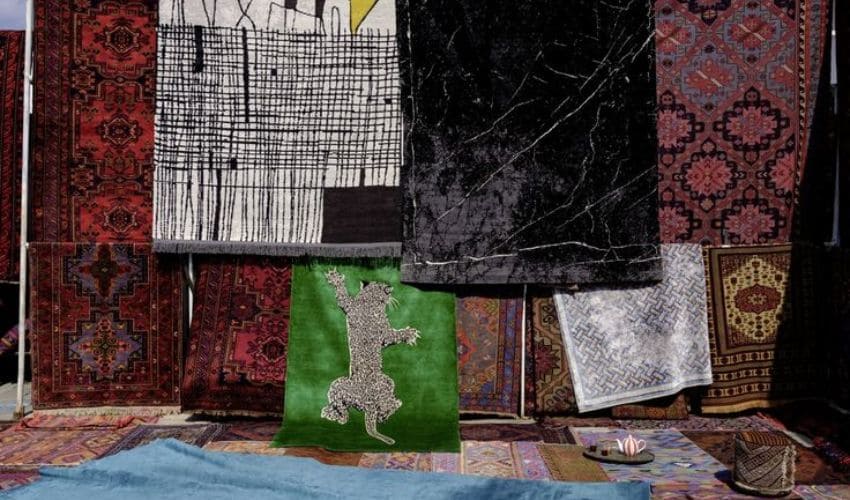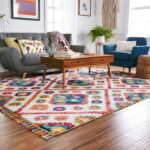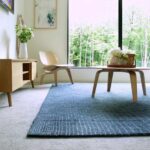Floor rugs not only anchor the room furniture but also combine durability, comfort, and elegance. When styling your spaces with rugs, selecting the right material is essential because it contributes to the design, coziness, insulation, and longevity.
These are made of natural, recyclable, and synthetic materials per the customers’ choice. In this piece of writing by Rug Dubai, you’ll discover the diverse rug fabrication options to align with different interior settings depending on the intended usage and beneficial tips for selection
Discover Different Types of Rug Materials
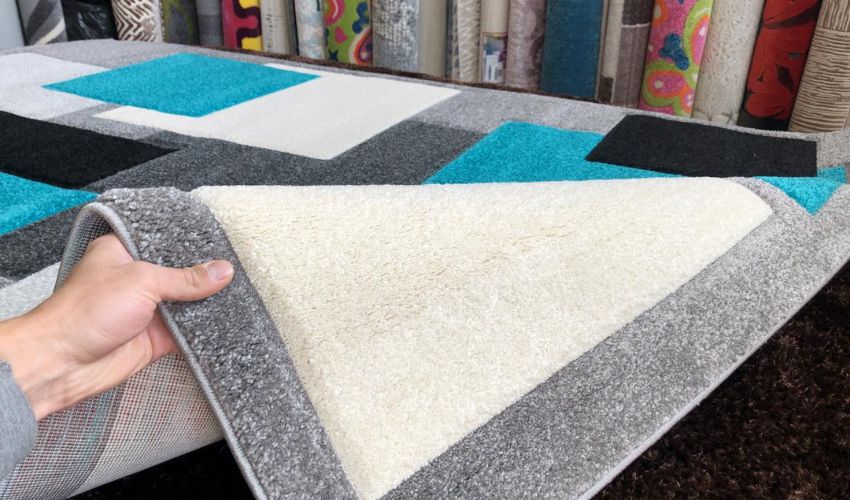
Rugs are crafted using different materials, offering style distinction, texture options, and variable lifespans. To help you with an informed selection, we are unveiling these fabrication materials here:
1
Wool Rugs
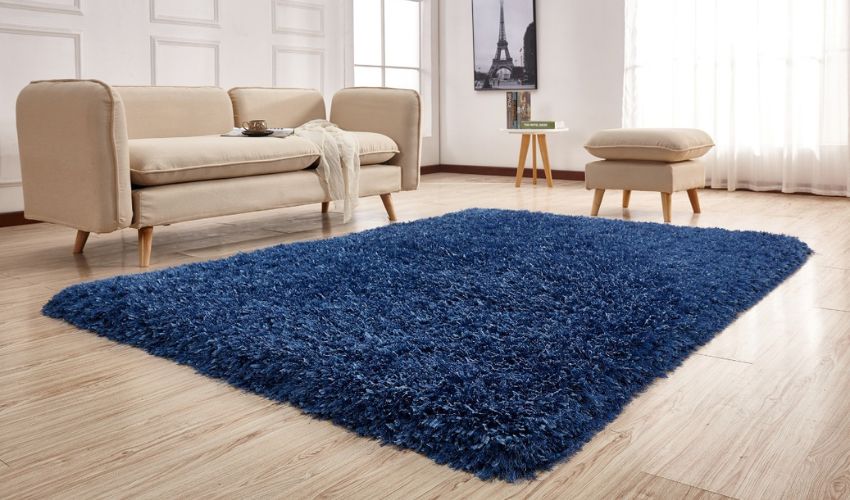
- Wool and Shaggy rugs are the highly popular option, renowned for its natural resilience and luxurious feel. This material is a great choice for high-traffic residential and commercial areas because of its comfy nature. You can get them with hand-tufted and machine-loomed options.
Pros
- Extremely soft, cozy, and fluffy
- Best for intense foot traffic areas
- Possess natural stain resistance
- Dust and dirt-repellent
- Act as the room insulator
- Naturally flame resistant
Cons
- Costly than synthetic alternatives
- Requires regular maintenance
- Prone to fade against constant sunlight
2
Cotton Rugs
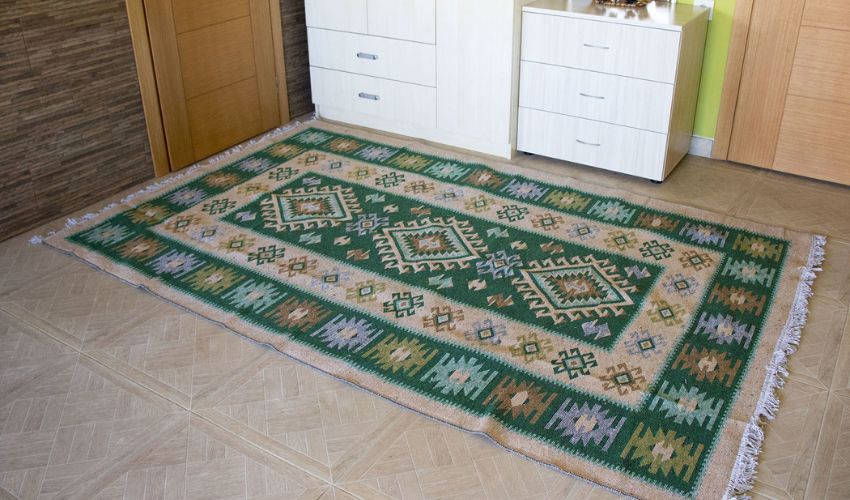
- One of the most versatile and lightweight floor covering options is cotton rugs that complement various interior styles. It is cost-effective, soft, and durable than other rug materials.
Pros
- They are cozy and gentle on the feet.
- Offers extensive design and style options
- Hypoallergenic option to allergy-sensitivities
- Natural, eco-friendly, and sustainable
- Can be easily customized
- Both hand and machine-washable
Cons
- May not be durable and flatten over time.
- Susceptible to damage in high foot traffic.
- Needs proper maintenance.
3
Jute Rugs
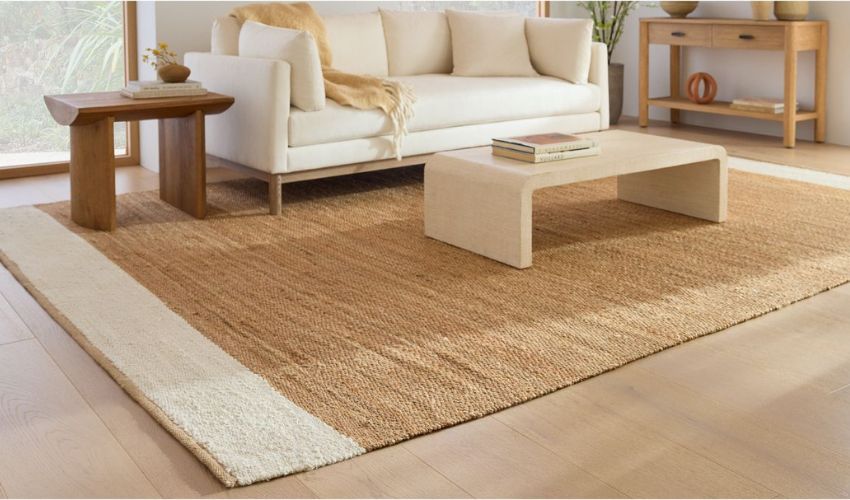
- Another material that is gaining popularity in floor styling is jute rugs. These are the sustainable alternatives to many other synthetic choices. Made from natural jute plants, they are naturally soft and sustainable.
Pros
- They are eco-friendly and biodegradable.
- Feature natural, rustic, and earthy texture.
- Soft yet strong fibers create stable surfaces.
- They are highly durable and long-lasting.
- Their fibers are resistant to stains.
Cons
- Unsuitable for moisture-prone places
- Can grow mold and mildew
- Discomforting for skin-sensitive individuals.
4
Sisal Rugs
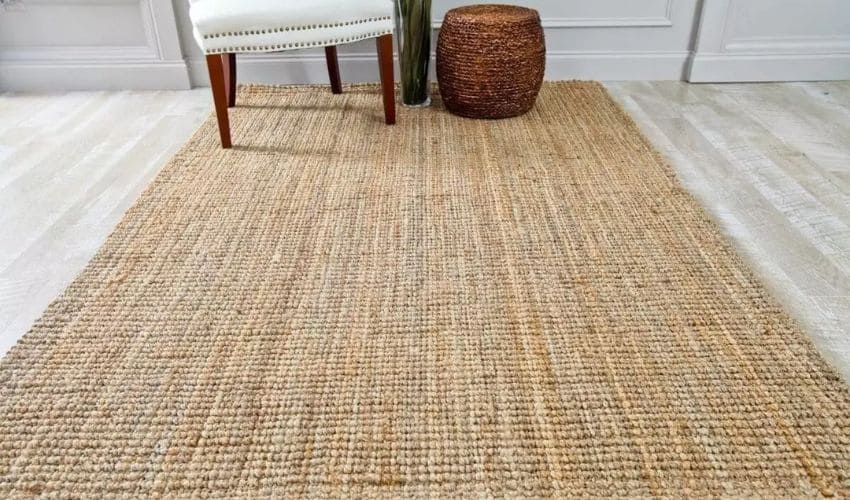
- Sisal rugs and carpets are manufactured using natural extracts from agave plants to be woven into strong threads and pile yarns. They offer unique organic texture, and a sophisticated feel, and are best for indoor and outdoor areas.
Pros
- Unique texture and manifold patterns.
- Best choice for high-traffic areas.
- Naturally resistant to stains
- Renewable, sustainable, & eco-friendly.
- Stand up well against wear and tear.
- Don’t require extraordinary maintenance.
Cons
- Can be rough when you are barefoot.
- Needs prevention against excess moisture.
- Can get discolored over light exposure.
5
Persian Rugs
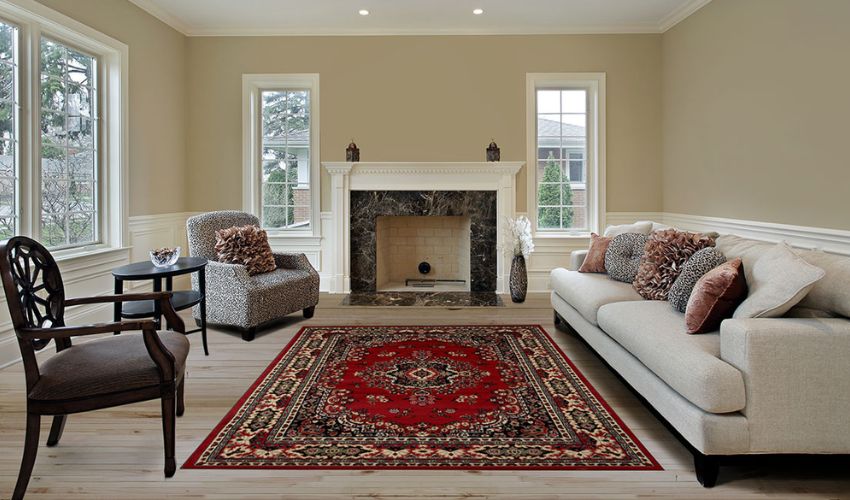
- Oriental or Persian rugs are hand-woven pieces that are popular because of their intricate and symbolic patterns and motifs. These rugs are the featured depiction of the vintage assets of individual tribes.
Pros
- Feature unique florals, medallions, and motifs
- They are the most rich and valuable pieces.
- Offers the highest durability against foot traffic.
- Brings warmth, insulation, and comfort.
- Can be resold at the best prices.
- Comes with high density and thread count.
Cons
- It is difficult to find a genuine piece.
- They are mass-produced, & you may find duplicates.
- They are more costly than all other rugs in the market.
6
Polyester Rugs
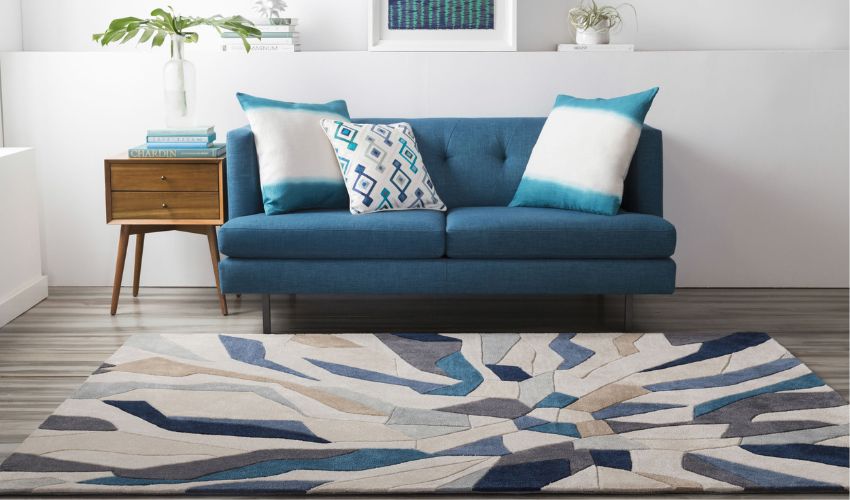
- Polyester is a widely known material for rugs, used for various residential and commercial locations. These rugs are an excellent choice for spaces that experience daily foot traffic.
Pros
- Available in a range of designs and colors
- Highly resistant to fade and moisture
- Offer incredibly low maintenance.
- Highly sustainable option.
- Best for indoors and outdoors.
- Offer a high level of insulation.
Cons
- Get damaged due to oily substances.
- Can cause stubborn stains.
- Not long lasting as wool and nylon.
7
Silk Rugs

- Silk rugs are the epitome of elegance and comfort due to their rich sheen, soft texture, and superior craftsmanship. With unparalleled beauty and sophistication, it is an excellent addition to any formal and informal place.
Pros
- Features stunning visuals and a luxurious feel.
- Offers color-retention, hence, long-lasting choices.
- Incredibly cozy, smooth, and soft to walk barefoot
- They offer shiny appeal with light reflection.
- Hypoallergenic and health-friendly solution.
- It offers the highest level of room insulation.
Cons
- They are delicate and require specialized cleaning.
- Unsuitable for high-traffic living spaces.
- Compared to other options, silk is expensive.
8
Polypropylene Rugs
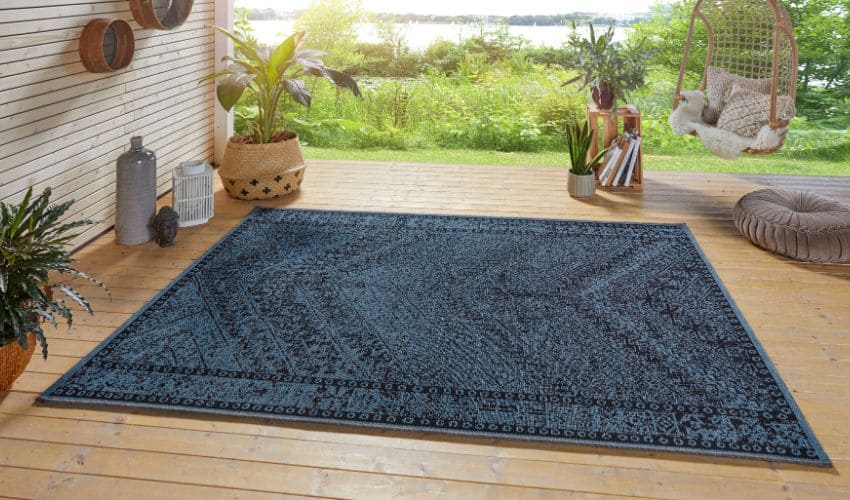
- The last option in the list of rug materials is polypropylene, also termed olefin rugs. These floor coverings are made from synthetic materials, providing you with the most sustainable and budget-friendly treatment to style floors.
Pros
- You can get these rugs in various designs and colors.
- Offer resistance against stains and discoloration.
- They can endure the highest extent of foot traffic.
- Moisture-resistant, good for kitchen and bathrooms.
- Easy to clean, and maintain, and offers rapid drying time.
- It is a cost-effective alternative to other materials.
Cons
- Don’t offer the luxurious sheen and feel.
- Lack bounce and may get flat over time.
- The fibers can melt against high heat.
Useful Instructions For The Ideal Selection Of Rugs

When you are on the hunt for shopping rugs for your residential and commercial spaces, you must be careful about certain aspects:
1. Aesthetic Appeal
When buying rugs, you must consider the style and room ambiance to select the right color, pattern, texture, and layout. You can pick from the modern to traditional styles, minimal to detailed designs, light to dark colors, and solid to textured options.
2. Comfort
Determine the level of your desired comfort and softness when selecting the material because every fiber is not the same. Wool and silk are the most soft and cozy while natural materials like jute and sisal can be rough on bare feet.
3. Durability
Assess the intended space’s foot traffic and determine whether the material can withstand frequent use. When it comes to durability, wool, sisal, and polypropylene are the best options that can withstand heavy wear and tear.
4. Stain Resistance
Check out the rug placement area whether it’s exposed to daily spills and stains. For spaces with kids and pets, you should consider the most durable option like polypropylene, it can endure heavy usage and is stain-resistant.
5. Eco-friendliness
Choose the sustainable, natural, and hypoallergenic option for individuals sensitive to allergies and infections. Polypropylene is good for allergy-sensitive people and wool and silk are natural and environment-friendly options.
6. Budget
Planning of budget is also crucial to getting the desired material for the rug. Set the budget according to the distinct price range of floor essentials. Wool, silk, and Persian are expensive, and synthetic materials are the budget-friendly options.
7. Maintenance
Evaluate your ability to maintain and clean your rugs according to their fiber sensitivity. Cotton and olefin are easy to clean and maintain and wool, Persian, and silk demands professional cleaning.
Final Thoughts!
Rugs are manufactured using different types of natural, synthetic, recyclable, and blends of distinct materials. To style your residential and commercial floors, you have wide options for selection in terms of materials. The natural materials include wool, sisal, cotton, and jute. On the other hand, synthetic materials include polyester, acrylic, polypropylene, and nylon.
When selecting any of these rug materials, you should consider several aspects including versatility, durability, softness, maintenance, and potential resistance against heavy use and environmental factors. This comprehensive guide will help you throughout with factors and rug options at the time of purchase to make the process smooth.

